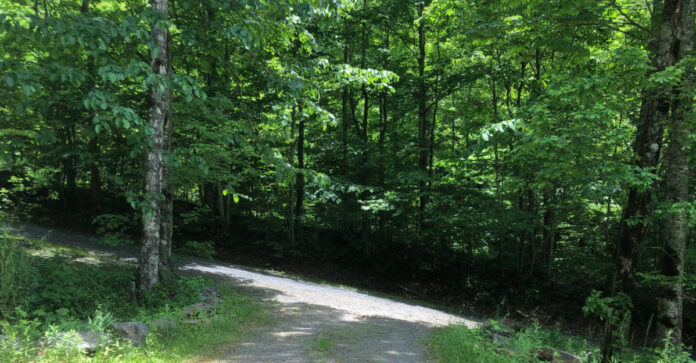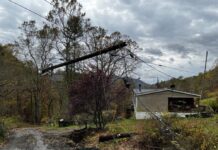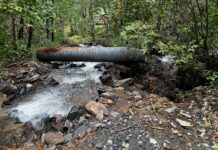This is the latest update on our search for the ideal prepper property. A location that can be both our home and our retreat. You can read the first installment here or read about the property on which we made an offer or see all the related articles here.
In Search of Property Lines
Two days ago, we visited our future prepper property, which we are under contract to buy. Our intent was to walk the property and identify the corners and property line. The property is wooded, steep, has multiple streams, and we wanted to visit the parts you can’t see easily from the house.
We gather our materials: the survey (done about 10 years ago), a hand-held-GPS, a print out from Google Earth which showed the old logging roads, and print out from the county GIS (Geographical Information System) showing the property lines and adjoining properties. The realtor also had an app that showed our approximate position based in the GIS data. Then we set off to explore
Parts of this were easy and parts were more difficult. The property line along the access road was easy to find, as were the corners. Also easy was the one side that had an old barbwire fence going much of the way. Difficult was the property line that zigzagged a couple times. Physically difficult was the corner was more than 700 vertical feet higher up the mountain than our starting point. It was pretty steep at parts. By the end of the day, we were able to find three of the four corners and believe we were pretty close to the others.
An Unexpected Problem
One thing we found, thanks to GPS notation on the septic permit, is that the septic field that serves the house is not located on the property owned by the seller. There is no right of way or easement allowing the property we are planning to buy to use the septic field on the other property. That means we might find ourselves in court one day arguing over whether we had the right to keep using it.
So our relator talks to the seller’s realtor, who talks to the seller, and the message trickles back to us that when the house was built, the seller owned a larger parcel, but sold off a portion and that portion happens to have the septic field on it. Don’t worry, we are told, the owner is well aware of its presence and is OK with it. Our realtor then tells us, “This happens all the time back here in the mountains.” Uh huh.
We outline our thinking, which goes like this: Great, glad to hear that the current owner of the septic field is aware of its presence and doesn’t have a problem with it, but what if he were to sell and the future owner wanted to build there? What if we sell the property in the future and our buyer has an issue, just like we do? Unfortunately, the potential liabilities and headaches are significant enough that we’re going to withdraw our offer to purchases unless you can have your neighbor sign an easement giving us the right to use and continue using the septic field, as well as allowing us access to it should it need maintenance or repair. Oh, and by the way, why wasn’t this addressed on the disclosure form?
More calls go back and forth between realtors and the seller. The answer comes back some time later: no problem. The seller will talk to the current owner and get an easement. It will be interesting to see if the other property owner is cooperative.
Lessons Learned
We have learned that few real estate transactions go perfectly smoothly. This experience illustrates that:
- There are times when boots on the ground trump an eye in the sky.
- You must do your homework. Pull the permits. Look at the GIS data, review the current deed, and don’t take the seller’s word for things.
- If you subdivide your land, don’t sell off something important like your septic field.
- Agreements between neighbors are nice, but if they are not in writing, they don’t really exist and are difficult to enforce.
Water Test Results
I mentioned a week or so back that we sent a water sample out for testing. Here are the results:
- There was no lead, nitrates, nitrites, or iron. The lack of nitrates and nitrites means no one has farmed the mountain using modern chemical fertilizers. The lack of iron means we have soft water that will not harm appliances or leave a yellow wring on clothing.
- There was no turbidity, meaning no clay, sand, dissolved solids, or biological materials that might cloud the water (even if not visible, they could still be in there). In fact, the test showed that the water was as clear as distilled water, meaning it detected no dirt particles. This is important because those tiny particles can carry a virus or bacteria.
- The test also showed that there was no E. Coli present, which is important when dealing with a natural water source.
- It passed all the other tests as well and was well within normal range for PH, alkalinity, etc.
Assuming that this septic issue is resolved, we continue to hope that we’ll be closing on our future prepper property late this month. The potential problem is enough, however, to make us take another look at new properties that have been listed on Realtor.com. Just in case.








